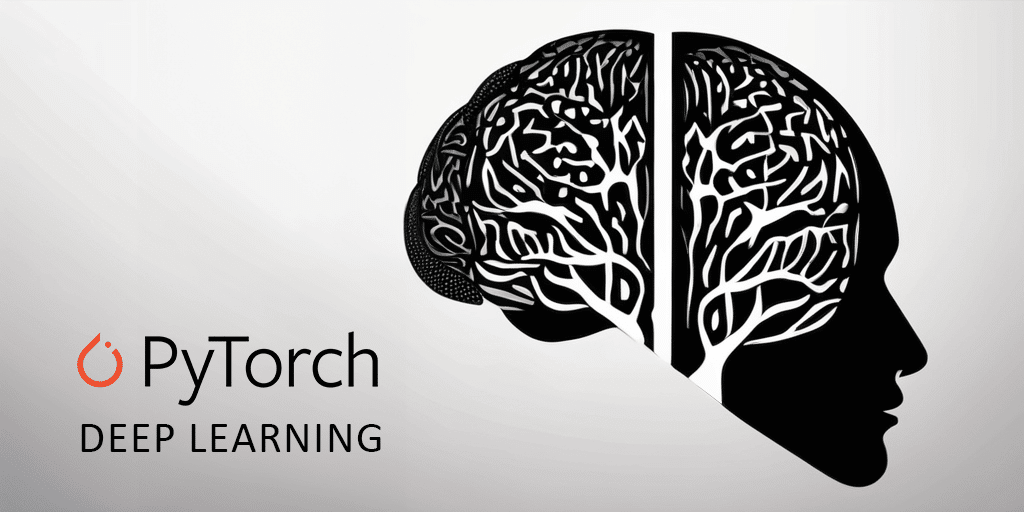PyTorch is a key player in the realm of deep learning frameworks. It’s a tool that has revolutionized the way we approach data science, specifically in the creation of machine learning and deep learning models. But what exactly is PyTorch? Let’s delve deeper to understand its core functionalities and its role in the world of data science.
PyTorch is a leading open-source deep learning framework developed by Facebook’s AI Research lab. It provides a flexible platform for building, training, and deploying machine learning models, with support for GPU acceleration and CUDA computing.
Ready to unlock the full potential of PyTorch and elevate your deep learning skills? Dive in as we explore its powerful features, practical applications, and how you can leverage it to solve complex data science problems.
Significance of PyTorch in Machine Learning
Ease of Use and Flexibility
PyTorch, with its Python interface and Nvidia GPU support via CUDA, is like the Swiss Army knife of machine learning. It’s super easy to use and flexible. You can cook up your machine learning models on your GPU just how you like ’em, no sweat for Torch developers.
- Do youu want to tweak your model mid-run? No problemo!
- Got a complex model architecture? Bring it on!
That’s what I’m talking about!
Deep Learning Applications of PyTorch
Building Models with PyTorch
Pytorch, a CUDA-enabled deep learning framework, lets you build machine learning models with Python on your GPU with ease. Think of Torch, a favorite among CUDA and Python developers, as your lego set for machine learning. You’re the architect and Pytorch is your toolbox.
- For instance, developers creating a neural network model in PyTorch using Python and CUDA, find it as simple as stacking Lego blocks with machine learning.
- The flexibility offered by Python allows developers to experiment and tweak their Cuda models on the fly.
Real-World Applications
Python developers utilize deep learning powered by Pytorch, not just in theory—it’s applied in their real-world applications too!
- Natural language processing (NLP) is one example where Pytorch shines for developers.
- Developers create solutions that help machines understand human language, making our interactions with them more natural and intuitive.
Efficiency and Speed
Time is money. That’s why the speed provided by Pytorch is such a game-changer for developers.
- It uses dynamic computation graphs which means it can adjust on-the-go during training.
- This leads to faster training times without compromising accuracy—pretty cool, huh?
Understanding PyTorch Tensors
What are Tensors
Tensors, folks, are the main players in the game of PyTorch. They’re like multi-dimensional arrays in your regular programming but with superpowers.
For instance, imagine a 3D space with x, y, and z coordinates. A tensor can hold data for all these dimensions together! Cool, right?
There are different types of tensors too. Some store integers; some handle floating-point numbers.
Operations Using PyTorch Tensors
Now that we’ve got tensors down pat let’s talk about what they do.
In PyTorch land, tensors perform operations similar to NumPy arrays but on steroids. They can add, subtract, multiply – you name it! Plus, they’re faster and more efficient.
Let’s say you have two tensors – A and B. To add them up in PyTorch is as simple as C = A + B. Easy peasy lemon squeezy!
Tensor Operations for Neural Network Computations
Here’s where things get spicy. In neural networks (remember those from our deep learning chat?), tensor operations play a vital role.
Think of each layer in a neural network as a function taking inputs (tensors) and spitting out outputs (also tensors). The magic happens when these functions start interacting with each other through these tensor operations.
A simple example would be training a model where weights (tensors) are adjusted based on the error computed (again using tensors!).
So there you have it. Tensors – the unsung heroes of PyTorch and deep learning computations!
Dynamic Neural Networks in PyTorch
Let’s take a deep dive into the world of dynamic computational graphs (DCGs) and how they bring flexibility to your model training process. Also, let’s compare them with static computational graphs found in other libraries like TensorFlow.
Flexibility with Dynamic Computational Graphs
DCGs are pretty rad. They’re like Lego blocks for neural networks. You can build, change, and rebuild them on the go during your model training process. It’s all about flexibility here.
- Build: Create your neural network structure
- Change: Modify the structure as needed
- Rebuild: Start over if you need to
Static Vs Dynamic Computational Graphs
Now, let’s talk differences. DCGs ain’t like static computational graphs used by TensorFlow and such. With static graphs, you gotta set everything up front and stick with it—no mid-training changes allowed.
But hey! PyTorch says “No way!” to that rigidity. Its DCGs allow you to switch things up even mid-run.
Benefits of Dynamic Neural Networks
Dynamic neural networks? They’re the bee’s knees! Debugging is a breeze because you can easily check what’s happening at each stage of the process.
Plus, you get to make changes on the fly while your model is running—something that isn’t possible with static graph systems.
PyTorch brings flexibility and control right to your fingertips with its dynamic neural networks powered by DCGs!
Role of GPUs in PyTorch Operations
Why GPUs Over CPUs
GPUs, or Graphics Processing Units, are the real champs. They’re like the superheroes of the tech world, swooping in to save the day when CPUs (Central Processing Units) struggle with heavy-duty tasks.
These tasks include PyTorch operations. You know, those complex computations that make your computer sound like an old car trying to start on a cold morning? Yeah, those!
CUDA Toolkit and GPU Power
Enter the CUDA toolkit. It’s like a secret weapon that allows us to tap into GPU power when working with PyTorch.
This toolkit is what makes it possible for PyTorch to run on a GPU. It’s like putting rocket fuel in your car instead of regular gas – you’re going to go faster!
GPU Acceleration and Performance Boost
Now let me tell you about something called GPU acceleration. This bad boy can seriously improve performance when dealing with large datasets or complex computations.
Think of it this way: if working with data was a marathon race, using a CPU would be like running on foot. But with GPU acceleration? You’d be zooming past everyone else in a race car!
In short, GPUs play a crucial role in running high-performance computing tasks involved with PyTorch operations efficiently. With tools such as CUDA and features like GPU acceleration at our disposal, we can handle larger datasets and complex computations without breaking a sweat.
Key Takeaways from PyTorch
So, there you have it! We’ve dived deep into the world of PyTorch and explored its significance in machine learning. You’ve learned how its dynamic neural networks and tensor operations are changing the game in deep learning applications. And let’s not forget about those powerful GPUs that supercharge PyTorch operations. Now you’re armed with knowledge that can help you harness the power of PyTorch for your own projects.
But don’t stop here! Keep exploring, keep experimenting. Remember, every great data scientist or AI engineer started exactly where you are right now – curious and eager to learn. Take advantage of online resources, join communities, ask questions, and most importantly – practice! So why wait? Dive into your first project with PyTorch today!
FAQs
What is the role of tensors in PyTorch?
In PyTorch, tensors are multi-dimensional arrays with a uniform type (integers, float32, etc.). They are used as the main data structures for building neural networks and handling inputs/outputs.
Can I use my GPU to run PyTorch?
Absolutely! One of the key strengths of PyTorch is its ability to leverage GPUs for accelerating tensor computations and processing large amounts of data.
Is it difficult to learn PyTorch?
Pytorch has a more pythonic nature which makes it easier to understand and implement. However, like any other tool or language, mastering it requires practice.
How does dynamic neural networking in Pyt torch differ from other libraries?
Unlike traditional static graph libraries where graphs need to be defined ahead of runtime, dynamic neural networks in Pytorch allow you to build and modify computational graphs on the fly during runtime.
Where can I find resources to learn more about using Pytorch for Deep Learning applications?
You can check out the official documentation on the Pytorch website, join PyTorch communities, or take online courses on platforms like Coursera or Udemy.





